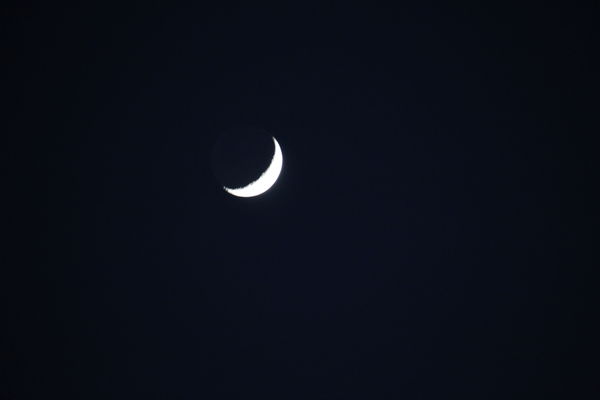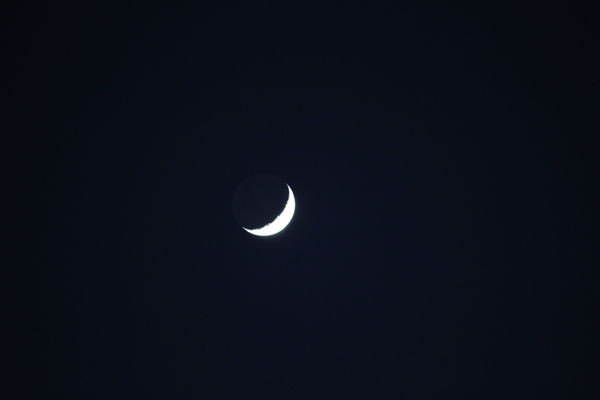Is my Tamron 18-270 defective
Dec 25, 2014 17:10:59 #
Doowopa
Loc: Connecticut
I was tired of switching lenses between the 18-55 and 55-250 canons.
sometimes adding the 50mm to the mix.
Decided to to buy the Tamron AF 18-270mm f/3.5-6.3 VC PZD Model BOO8E It was through amazon used like new.
I was playing around with to 55-250 18-270 today and noticed the 270 wasn't zooming in as close as the 250.
Is it defective or is there something else I should be aware of.
I'm using the SL1
Please don't judge The pics was just using for an example.
Same result at 18mm by the way
sometimes adding the 50mm to the mix.
Decided to to buy the Tamron AF 18-270mm f/3.5-6.3 VC PZD Model BOO8E It was through amazon used like new.
I was playing around with to 55-250 18-270 today and noticed the 270 wasn't zooming in as close as the 250.
Is it defective or is there something else I should be aware of.
I'm using the SL1
Please don't judge The pics was just using for an example.
Same result at 18mm by the way
Dec 25, 2014 17:16:21 #
Dec 25, 2014 18:18:22 #
Doowopa wrote:
I have 30 days to return it which is up 1/08
when focused at less than infinity, lense are often shorter than specified.
Its the nature of the beast and to add insult to injury they will often shift focus as you zoom.
Dec 25, 2014 20:43:22 #
This is common to all all-in-one zoom lenses. They lose focal length at distances closer than infinity or near infinity. That's why the photo of the Moon did not lose focal length. It's inherent in their design.
Dec 25, 2014 21:52:33 #
Frank2013
Loc: San Antonio, TX. & Milwaukee, WI.
oldtigger wrote:
when focused at less than infinity, lense are often shorter than specified.
Its the nature of the beast and to add insult to injury they will often shift focus as you zoom.
Its the nature of the beast and to add insult to injury they will often shift focus as you zoom.
Could you expand on this a little. I just don't understand this at all. I do not understand what focus has to do with. Seems to me if you are zoomed in to 200,230,270 or what ever the field of view would be the same whether in focus or not and in the photo example they are not. Don't waste your time with me if there is something I should read some where. I don't know a lot about the finer points photography but have never run across this.
Dec 25, 2014 22:09:41 #
Frank2013 wrote:
Could you expand on this a little. I just don't understand this at all. I do not understand what focus has to do with. Seems to me if you are zoomed in to 200,230,270 or what ever the field of view would be the same whether in focus or not and in the photo example they are not. Don't waste your time with me if there is something I should read some where. I don't know a lot about the finer points photography but have never run across this.
Some things which can be explained do not need to be if they can be demonstrated.
Set up on a tripod, wide open aperture, subject at 200 feet, 270mm.
Manually focus using magnified liveview.
Changing nothing else, reduce your zoom to 75mm.
Recheck your focus. do this several times.
Do you see a difference?
I have a nikkor 70-200 f2.8 lens. it is considered one of the better ones and worth the $2000 price.
Its maximum zoom is less than 150mm when focused at 20 feet. Its just the way they design them.
Dec 25, 2014 22:10:53 #
Doowopa
Loc: Connecticut
Thanks for the reply's.
Still scratching my head.
why buy a lens that should go to 270 that doesn't even come close to the 55-250 at 270.
I'm not sure I'm explaining this properly bear with me.
Still scratching my head.
why buy a lens that should go to 270 that doesn't even come close to the 55-250 at 270.
I'm not sure I'm explaining this properly bear with me.
Dec 25, 2014 22:24:10 #
Doowopa wrote:
...why buy a lens that should go to 270 that doesn't even come close to the 55-250 at 270.
I'm not sure I'm explaining this properly bear with me.
I'm not sure I'm explaining this properly bear with me.
Why did you purchase a lens that changes from f3.5 to f6.3 when you zoom?
Because you can't afford the $10,000 lens that doesn't have those problems.
Dec 25, 2014 22:28:44 #
Frank2013
Loc: San Antonio, TX. & Milwaukee, WI.
oldtigger wrote:
Some things which can be explained do not need to ... (show quote)
I'll have to do some research. Thank you for responding.
Dec 25, 2014 22:37:42 #
Doowopa
Loc: Connecticut
Maybe I can afford it but I'm just to cheap.
Naw you're right can't afford it.
I like the tamron lens but got some good pics of the moon with the other lens just figured this would get me a hair closer but it went the other way.
Didn't make sense but I fooled around and found the tamron focuses at a different distance then the canon.
Thanks for your patience.
Naw you're right can't afford it.
I like the tamron lens but got some good pics of the moon with the other lens just figured this would get me a hair closer but it went the other way.
Didn't make sense but I fooled around and found the tamron focuses at a different distance then the canon.
Thanks for your patience.
Dec 25, 2014 22:49:13 #
Doowopa wrote:
...I like the tamron lens but got some good pics of the moon with the other lens just figured this would get me a hair closer but it went the other way.
...
...
Try the tamron and focus it on the moon (don't forget to expose for the moon); you may well find the tamron sharper.
Dec 25, 2014 23:17:01 #
Doowopa wrote:
Thanks for the reply's.
Still scratching my head.
why buy a lens that should go to 270 that doesn't even come close to the 55-250 at 270.
I'm not sure I'm explaining this properly bear with me.
Still scratching my head.
why buy a lens that should go to 270 that doesn't even come close to the 55-250 at 270.
I'm not sure I'm explaining this properly bear with me.
http://en.wikipedia.org/wiki/Zoom_lens
short extract which may help.
"Whereas lenses used in cinematography and video applications are required to maintain focus while the focal length is changed, there is no such requirement for still photography, or if a zoom lens is used as a projection lens. Since it is harder to construct a lens that does not change focus with the same image quality as one that does, the latter applications often have lenses that require refocusing once the focal length has changed (and thus strictly speaking are varifocal lenses , not zoom lenses). As most modern still cameras are autofocus, this is not a problem.
Designers of zoom lenses with large zoom ratios often trade one or more aberrations for higher image sharpness. For example, a greater degree of barrel and pincushion distortion is tolerated in lenses that span the focal length range from wide angle to telephoto with a focal ratio of 10x or more than would be acceptable in a fixed focal length lens or a zoom lens with a lower ratio. Although modern design methods have been continually reducing this problem, barrel distortion of greater than one percent is common in these large-ratio lenses.
Another price paid is that at the extreme telephoto setting of the lens the effective focal length changes significantly while the lens is focused on closer objects. The apparent focal length can more than halve while the lens is focused from infinity to medium close-up . To a lesser degree, this effect is also seen in fixed focal length lenses that move internal lens elements, rather than the entire lens, to effect changes in magnification. "
In plain English your 270mm lens is 270mm only if your subject is in the right place.
It's very difficult to cover a huge range of focal lengths with a single lens, so you have to make a trade off or use more lenses to be more consistent.
You have stumbled across one of the benefits of prime lenses over zooms / varifocal lenses. Maybe too some of the reason why lenses that look the same on paper are not the same in action.
http://www.gizmag.com/panasonic-lumix-fz70--60x-zoom/28394/
"However, as is typical of bridge cameras, the large optical zoom is only possible because of the sacrifices made in terms of sensor size. The FZ70 has a 1/2.3-inch (4.54 x 3.42 mm) 16.1-megapixel MOS sensor, which is undeniably small. But it's this crop which makes the 3.58-215-mm lens a 20-1,200-mm equivalent. Yes, it would be nice to have a big zoom range like this on an APS-C or even Full Frame camera, but just look at the Nikkor 800-mm lens and imagine how big and heavy it would be. "
I calculate that to a crop factor of ~5.58 your lens would be (100 -1506mm) on that camera. Mad isn't it.
(3.22 - 48.38 mm) That's a hypothetical equivalent of your tamron on an fz70 thats why its easier to build a lens for a tiny sensor a much shorter range of focal distances.
So no your tamron is not defective but for practical purposes its effectively shorter than your existing 55-250 is it better at the short end ? I think i'd want to return it and see if there is a better lens to do what you want it maybe too expensive to justify replacing your existing lenses.
Dec 26, 2014 06:32:58 #
Doowopa is not asking about focus or depth of field. He is asking pure and simply about magnification. His concern is that a point marked on the lens barrel of 270 on the Tamron does not seem render the same size image as 250 on his other lens. All else being equal, reasonably, photos taken at 250 on either lens should give about the same sized finished photo. In his photos, the subject is smaller when shot at higher magnification with the Tamron.
Dec 26, 2014 07:09:03 #
oldtigger wrote:
when focused at less than infinity, lense are often shorter than specified.
Its the nature of the beast and to add insult to injury they will often shift focus as you zoom.
Its the nature of the beast and to add insult to injury they will often shift focus as you zoom.
Yeah, this is one of those things they don't tell you when you buy a lens, something like, "Your mileage will vary."
Dec 26, 2014 09:24:48 #
4rum wrote:
Doowopa is not asking about focus or depth of field. He is asking pure and simply about magnification. His concern is that a point marked on the lens barrel of 270 on the Tamron does not seem render the same size image as 250 on his other lens. All else being equal, reasonably, photos taken at 250 on either lens should give about the same sized finished photo. In his photos, the subject is smaller when shot at higher magnification with the Tamron.
Thank you. I kept reading some of the responses and was about to post the same thing as you.
The question has nothing to do with focus but is all about why one lens zooms to 270mm and one another zooms to 250mm yet the 250 magnifies the subject more than the 270mm.
While I don't have the exact answer for the OP I am wondering if the zoom range published by manufacturers only needs to be in a certain range to be classed as that magnification.
Dennis
If you want to reply, then register here. Registration is free and your account is created instantly, so you can post right away.








